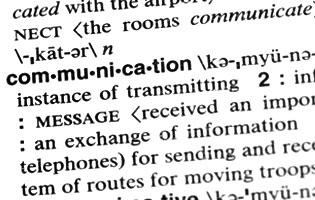


L
Landlord’s Lien:
A type of lien that can be created by contract or by operation of law. Some examples are:
(1) a contractual landlord’s lien as might be found in a lease agreement; (2) a statutory landlord’s lien; and (3) landlord’s remedy of distress (or right of distraint), which in not truly a lien but has a similar effect. See also "Lien".
Landlord’s Lien or Warrant:
A warrant from a landlord to levy upon a tenant’s personal property (e.g., furniture, etc.) and to sell this property at a public sale to compel payment of the rent or the observance of some other stipulation in the lease.
Lease:
An agreement whereby the owner of real property (i.e., landlord/lessor) gives the right of possession to another (i.e., tenant/lessee) for a specified period of time (i.e., term) and for a specified consideration (i.e., rent).
Lease Agreement:
The formal legal document entered into between a Landlord and a Tenant to reflect the terms of the negotiations between them; that is, the lease terms have been negotiated and agreed upon, and the agreement has been reduced to writing. It constitutes the entire agreement between the parties and sets forth their basic legal rights.
Lease Commencement Date:
The date usually constitutes the commencement of the term of the Lease for all purposes, whether or not the tenant has actually taken possession so long as beneficial occupancy is possible. In reality, there could be other agreements, such as an Early Occupancy Agreement, which have an impact on this strict definition.
Leasehold Improvements:
Improvements made to the leased premises by or for a tenant. Generally, especially in new space, part of the negotiations will include in some detail the improvements to be made in the leased premises by Landlord. See also “Tenant Improvements”.
Legal Description:
A geographical description identifying a parcel of land by government survey, metes and bounds, or lot numbers of a recorded plat including a description of any portion thereof that is subject to an easement or reservation.
Legal Owner:
The term is in technical contrast to equitable owner. The legal owner has title to the property, although the title may actually carry no rights to the property other than as a lien. See also “Lien”.
Letter Of Attornment:
A letter from the grantor to a tenant, stating that a property has been sold, and directing rent to be paid to the grantee (buyer). See also “Attorn”.
Letter Of Credit:
A commitment by a bank or other person, made at the request of a customer, that the issuer will honor drafts or other demands for payment upon full compliance with the conditions specified in the letter of credit. Letters of credit are often used in place of cash deposited with the landlord in satisfying the security deposit provisions of a lease.
Letter Of Intent:
A preliminary agreement stating the proposed terms for a final contract. They can be "binding" or "non-binding". This is the threshold issue in most litigation concerning letters of intent. The parties should always consult their respective legal counsel before signing any Letter of Intent.
Lien:
A claim or encumbrance against property used to secure a debt, charge or the performance of some act. Includes liens acquired by contract or by operation of law. Note that all liens are encumbrances but all encumbrances are not liens.
Lien Waiver (Waiver of Liens):
A waiver of mechanic’s lien rights, signed by a general contractor and his subcontractors, that is often required before the general contractor can receive a draw under the payment provisions of a construction contract. May also be required before the owner can receive a draw on a construction loan.
Like-Kind Property:
A term used in an exchange of property held for productive use in a trade or business or for investment. Unless cash is received, the tax consequences of the exchange are postponed pursuant to Section 1031 of the Internal Revenue Code.
Limited Partnership:
A type of partnership, created under state law, comprised of one or more general partners who manage the business and who are personally liable for partnership debts, and one or more special or limited partners who contribute capital and share in profits but who take no part in running the business and incur no liability over and above the amount contributed. See also "General Partner".
Listing Agreement:
An agreement between the owner of a property and a real estate broker giving the broker the authorization to attempt to sell or lease the property at a certain price and terms in return for a commission, set fee or other form of compensation. See also “Exclusive Listing Agreement”.
Long Term Lease:
In most markets, this refers to a lease whose term is at least three years from initial signing until the date of expiration or renewal option.
Lot:
Generally, one of several contiguous parcels of land making up a fractional part or subdivision of a block, the boundaries of which are shown on recorded maps and “plats”.
Low Rise:
A building with fewer than 4 stories above ground level.
Lump-Sum Contract:
A type of construction contract requiring the general contractor to complete a building or project for a fixed cost normally established by competitive bidding. The contractor absorbs any loss or retains any profit.
A
B
C
D
E
F
G
H
I
J
K
L
M
N
O
P
Q
R
S
T
U
V
W
X
Y
Z
View All
GLOSSARY
